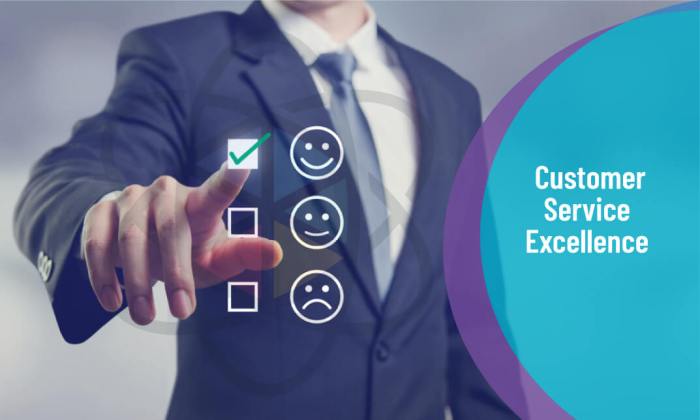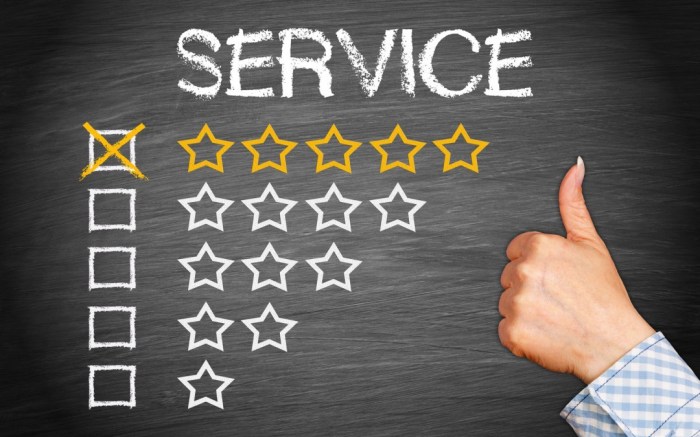Kicking off with Customer Service Excellence, this topic dives into the key elements that contribute to exceptional customer service, training strategies, and measurement methods. Get ready for a deep dive into the world of top-notch customer service!
Definition of Customer Service Excellence
Customer service excellence in business refers to consistently providing exceptional service and support to customers, exceeding their expectations and needs. It involves listening to customers, addressing their concerns promptly, and going the extra mile to ensure their satisfaction.
Examples of Companies Known for Exceptional Customer Service
- Amazon: Known for its efficient and fast delivery, easy returns process, and responsive customer support.
- Zappos: Renowned for its 24/7 customer service, free shipping, and hassle-free return policy.
- Ritz-Carlton: Recognized for its personalized service, attention to detail, and commitment to customer satisfaction.
Importance of Customer Service Excellence
Customer service excellence plays a crucial role in building brand loyalty and customer satisfaction. When customers have positive interactions with a company’s customer service team, they are more likely to become repeat customers and recommend the brand to others. Additionally, exceptional customer service can help differentiate a company from its competitors and create a positive brand image in the market.
Key Elements of Customer Service Excellence

In order to deliver excellent customer service, there are several key components that organizations must focus on. These elements not only help in satisfying customers but also in building long-term relationships with them. Training employees to uphold these standards and leveraging technology can further enhance the quality of customer service.
Key Components for Delivering Excellent Customer Service
- Effective Communication: Ensuring clear and prompt communication with customers to address their queries and concerns.
- Empathy and Understanding: Showing empathy towards customers’ needs and concerns to build trust and rapport.
- Problem-Solving Skills: Being able to quickly and efficiently resolve issues and complaints to ensure customer satisfaction.
- Product Knowledge: Having a deep understanding of the products or services offered to provide accurate information to customers.
- Personalization: Tailoring interactions and solutions to meet the individual needs and preferences of each customer.
Strategies for Training Employees
- Regular Training Sessions: Conducting regular training sessions to educate employees on customer service best practices and techniques.
- Role-Playing Exercises: Engaging employees in role-playing exercises to practice handling various customer scenarios and improve their skills.
- Feedback Mechanisms: Providing constructive feedback to employees based on customer interactions to help them learn and grow.
- Rewards and Recognition: Implementing a rewards system to incentivize employees who consistently deliver excellent customer service.
- Lead by Example: Encouraging managers and leaders to exemplify exceptional customer service behavior for employees to emulate.
Utilizing Technology to Enhance Customer Service Quality
- Live Chat Support: Offering real-time assistance to customers through live chat on websites or mobile apps.
- CRM Systems: Using Customer Relationship Management systems to track customer interactions and provide personalized service.
- Social Media Monitoring: Monitoring social media platforms to address customer feedback and concerns in a timely manner.
- Self-Service Options: Providing self-service options like FAQs, knowledge bases, and chatbots to empower customers to find solutions independently.
- Feedback Surveys: Using technology to gather feedback from customers and improve service based on their suggestions and comments.
Measuring Customer Service Excellence

To ensure that customer service excellence is consistently maintained, businesses need to measure their performance in this area. This involves tracking various metrics and utilizing different methods to evaluate the quality of service provided to customers.
Customer Satisfaction Surveys
Customer satisfaction surveys are a common method used by companies to measure customer service excellence. These surveys typically gather feedback from customers regarding their experience with the company’s products or services. By analyzing the responses, businesses can identify areas of improvement and make necessary adjustments to enhance customer satisfaction.
Net Promoter Score (NPS)
The Net Promoter Score (NPS) is another popular metric used to measure customer service excellence. NPS measures the likelihood of customers to recommend a company’s products or services to others. A high NPS indicates satisfied customers who are likely to become repeat customers and refer others to the business.
Monitoring Customer Reviews and Feedback
Monitoring customer reviews and feedback is crucial in evaluating service quality. By paying attention to customer comments on review platforms and social media, businesses can gain valuable insights into areas of strength and weakness in their customer service. Addressing negative feedback promptly and effectively can help improve overall service quality.
Example: Zappos, Customer Service Excellence
Zappos, an online shoe and clothing retailer, is known for its exceptional customer service. The company measures customer service excellence by tracking metrics such as customer satisfaction scores, average resolution time for customer inquiries, and customer retention rates. Zappos also encourages feedback from customers through surveys and actively engages with customers on social media to ensure a positive customer experience.
Implementing Customer Service Excellence
Creating a customer-centric culture within an organization is crucial for ensuring customer service excellence. It involves instilling a mindset that puts the customer at the center of all operations and decisions.
Steps to Create a Customer-Centric Culture:
- Establish clear customer service goals and expectations for all employees.
- Provide ongoing training and coaching to enhance customer service skills.
- Encourage open communication and feedback channels for both customers and employees.
- Reward and recognize employees who demonstrate exceptional customer service.
- Regularly review and assess customer feedback to make necessary improvements.
Best Practices for Resolving Customer Complaints:
- Listen actively to the customer’s concerns and show empathy.
- Apologize sincerely for any inconvenience caused and take ownership of the issue.
- Offer a solution that meets the customer’s needs and follow up to ensure satisfaction.
- Learn from complaints to prevent similar issues in the future.
Role of Leadership in Fostering a Culture of Customer Service Excellence:
- Set a positive example by prioritizing customer service in all interactions.
- Provide resources and support to empower employees to deliver exceptional service.
- Communicate the importance of customer satisfaction and advocate for customer-centric practices.
- Lead by encouraging a culture of continuous improvement and learning in customer service.






